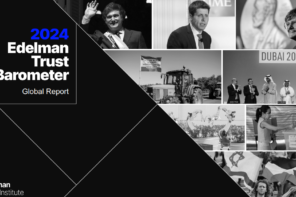
Monday April 1, 2024
We Need to Confront the PR Industry’s DEI Problem
These are just a few takeaways from the freshly released CIPR’s PR population report, the most accurate and comprehensive study of the PR profession to date, and one thing is apparent from its findings: The PR industry still has a DEI problem that we must address.
The PR Industry is Disproportionately White
According to the freshly released PR Population report by the CIPR, 87% of PR practitioners are of white ethnicity. The industry has come a long way in increasing ethnic diversity since 2017 when 96% of the PR practitioner population identified with a white ethnic background.
Whilst we can acknowledge this as a step in the right direction, there is still a long way to go before we can say that the PR industry truly embraces ethnic diversity. To put it into perspective, data from the latest government census on the UK’s ethnic makeup shows that 81.7% of the UK population is ethnically white, less than the white PR population — so why is PR so white?
It is also worth noting that the White British population is a minority in London, where PR firms in the UK are highly concentrated. Yet, they still outnumber the total percentage of non-British White and ethnic PR professionals in the UK.
It does not help either that a lot of people of colour in the industry are subject to stereotyping. On the London College of Communication’s Value Talks podcast, Founder of PR consultancy Axe + Saw Rachel Allison said, “I’ve been pulled into pitches at the last minute when it’s a streetwear client because they think it will help sell the brand a lot more because I am the epitome of urban, apparently, so it’s all those small little micro-aggressions that really signify that this, as an industry, hasn’t evolved that much.”
Sexism is still an issue.
The population report also details that women comprise 60% of the PR population, signifying that it is a heavily female-dominated industry. What is concerning, though, is that this figure is knocked down by 14 percentage points at the director group level, with only 46% of practitioners being female in contrast to 54% of practitioners being male.
Findings from a 2023 Global Women in PR (GWPR) survey suggest that the circumstances of motherhood play a role in this, as almost half (45%) of PR practitioners feel that mothers are promoted more slowly versus 2% of fathers.
Other common barriers to women entering more senior positions include the lack of flexible or family-friendly work opportunities, women being less likely to proactively ask for a promotion, a lack of transparency around recruitment and promotion, and a lack of work-life balance in a senior role.
As men are more successful in climbing the PR career ladder, a survey found that they took home a salary almost a quarter (24%) higher than their female counterparts. The same applies to in-house practitioners, with men earning 11% more base pay.
Jo Carr, Co-Founder and Chief Client Officer at Hope&Glory PR commented on the issue in the Beyond The Noise Podcast, “Something is going significantly wrong, and it’s not about pay parity because as an industry, I think we’re pretty good at that — and in fact, it’s illegal not to pay equally. So quite frankly, I think women are feeling blocked, they’re feeling bullied sometimes, they’re feeling burnt out, and they’re just bailing.”
“They are leaving our industry in droves in their 30s and 40s, and it’s a shame, and I think that’s really what’s behind the difference in pay. It’s just less women in those senior roles.”
Ageism in the industry
To say that the PR industry is ageist might be a bold claim, but it is not too far from the truth. The CIPR population report details how the industry is particularly young, with 45% of practitioners between the ages of 16-34, 34% between 35-49, 21% between 50-74, and none at 75 years or older.
Not only is the industry typically young, but almost a quarter (23%) of female PR professionals reported having experienced age discrimination. This, coupled with the previous point on industry sexism, has resulted in two-thirds of women working in PR agencies and 44% of in-house PR women stating that they do not envision themselves staying in the profession beyond the age of 50.
It may be because people think older practitioners are not productive or adaptable enough to survive in such a dynamic industry. Sometimes, we need to remember that while fresh talent can bring fresh perspectives, older practitioners can bring a wealth of experience. Scientific evidence shows how raw mental horsepower declines after 30, but knowledge and expertise, as one of the main drivers of job performance, will increase even beyond the age of 80.
In an industry where we have to think and act strategically, such cognitive diversity is sure to be beneficial.
A lack of social mobility
The PR industry also has a reputation for being ‘privileged’ as it is quite a difficult profession to get into for those with a background of lower-income households or those who are unable to obtain a degree.
In 2019, it was found that PR professionals are four times more likely to receive private education than the general public. On top of that, the new CIPR population report details how 82% of PR practitioners have level 4 qualifications or above, equivalent to the Bachelor’s Degree program. Those with level 3 qualifications, such as A-levels, comprise 10% of the industry’s practitioners, while the remaining 8% fall into all other lower qualification levels.
As the average PR professional comes from a more privileged background, a 2021 report by the CIPR found that the industry as a whole is ‘out of step’ with the views of the general public on the topic of social mobility. The report details that 40% of PR professionals believe that background has no impact on where they end up in their careers, compared to 60% of the public who share the view. Could this be a classic case of one being unaware of their privilege?
Influential PR power couple and Founders of Socially Mobile, Stephen and Sarah Waddington, extensively discuss the topic of social mobility in the PRCA Fuse podcast. Speaking on why the PR industry should focus on social mobility, Stephen explained, “First thing is it’s the right thing by society. I think the research was done originally in the 80s that said if you wanted to run a best-practice communication team [or] public relations team, you needed to represent the public that you were trying to engage with.”
“Here we are, 30-40 years later, and suddenly, we’ve woken up to this in the industry. D&I initiatives tend to focus initially from the perspective of ethnicity, but the socio-economic dimension is really important.”
With all that said, the simplest and most straightforward solution to many of the PR industry’s DEI issues is for organisations to establish or reexamine their DEI policies. Yet, less than two-thirds (64%) of PR practitioners say that their employer has policies regarding gender equality, diversity and inclusion. The remainder have either claimed that they do not have any policies in place or are unsure of their existence within their respective companies.
However, even more important than the establishment of these policies is its enforcement. To fulfil such policies is a goal, and we all know that goals need to be SMART: Specific, measurable, achievable, relevant and time-bound. Even then, it is estimated that only about a third (35%) of companies with DEI policies have targets in relation to it. Is it setting up an apprenticeship for social mobility and committing to having at least one apprentice at a time? Is it reevaluating the company’s diversity policies and ensuring the hiring of diverse candidates? Whatever it is, it is time for us as an industry to address the DEI issue head-on, acknowledge the gaps, and set measurable goals to progress towards a better future.
Curzon PR is a London-based PR firm working with clients globally. If you have any questions, please feel free to contact our Business Development Team bd@curzonpr.com
![Elevating Professionalism in Public Relations blog temp 2 [Recovered]-01](https://curzonpr.com/theprinsider/wp-content/uploads/2024/07/blog-temp-2-Recovered-01-1.png)






Follow us